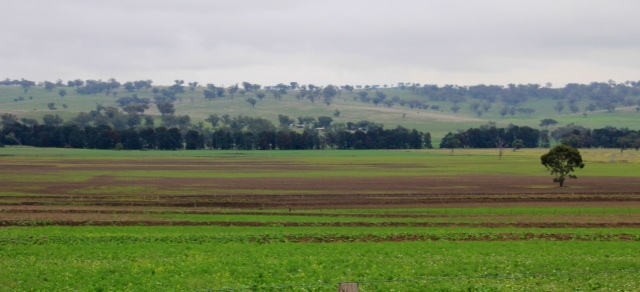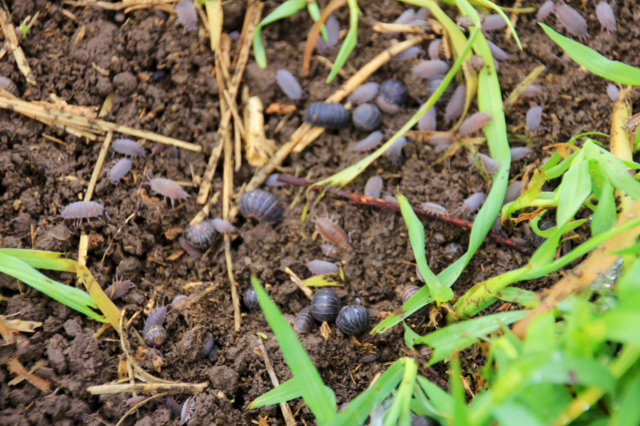Slaters commonly feed on decaying stubble and other organic matter within crops, however, in high numbers they will damage newly emerged seedlings.
Where have they been reported?
Slaters have been observed in modest numbers feeding on early-emerged canola cotyledons north of Ballarat in Victoria’s Central district. The slaters were more evident in large patches in areas of heavy stubble mulch.
Slaters have become an entrenched problem over several years in the areas encompassing Cassilis, Coolah and Merriwar within the NSW Central Tablelands. In previous years, they have demolished large stands of lucerne, chickory and oats. This year, numbers are very high under heavy stubble loads.
In the Moree area of the North West Slopes and Plains of NSW, early signs of the flood bug (Australiodillo bifrons) have appeared around farms although no actual damage has yet been recorded. The flood bug is a native slater known for its tendency to swarm, particularly in cereals and in areas prone to flooding.


About slaters
Slaters are being increasingly found in broadacre crops over recent years. This has almost certainly been encouraged by minimum or no-tillage and stubble retained cropping practices. Crop stubble provides a cool, moist habitat that aids slater survival; slaters will die if exposed to open, dry conditions.
Slaters are omnivores or scavengers. They generally feed on decaying vegetable matter and associated fungi and form an important link in the food chain by recycling dead and decaying matter. However, they can also feed on plant seedlings and be crop pests.
Due to the increase in no-till farming, the pill bug (Armadillidium vulgare)has been reported to be a major pest of oilseed crops in parts of the United States and Argentina. In Australia, PestFacts reports have documented pill bugs, flood bugs and common slaters (Porcellio scaber)causing damage to a wide range of crop species.
University of Melbourne researcher Josh Douglas investigated feeding behavior of the pill bug on a range of broadacre crop seedlings. Lupins, lucerne, canola and oats were found to be particularly susceptible to feeding damage, whilst damage to wheat, chickpeas and lentils was limited. No feeding damage was done to faba beans.
For detailed information about this pest, and for advice on preventative management strategies, go to slaters within the PestNote series.
Our advice
Monitor paddocks closely before sowing to be aware of potential pest pressure.
Stubble management prior to sowing should provide an effective strategy to reduce slater numbers. Reducing stubble loads, or disturbing stubble in summer can suppress slater populations, exposing insects to the hot soil.
Some growers have had success managing slaters ahead of canola rotations by burning crop residues. In other cases, crop damage seems to be more pronounced in burnt paddocks. In this situation, it is plausible that slaters that avoid the heat of a burn through harbouring in soil cracks become more voracious in the absence of stubble and attack all emerging plants.
Reports in previous years tend to indicate that fipronil treated seed should curb damage, at least initially.
Slaters only become a problem if high numbers are seen feeding on the crop, in addition to widespread damage symptoms.
Insecticide sprays aimed at other crop establishment pests are generally ineffective; many of the active ingredients are relatively harmless to slaters. Slaters also hide under cover and avoid contact with insecticide sprays.
cesar has recently undertaken laboratory-based microcosm trials with Bayer CropScience looking at methiocarb baits. Although still preliminary and only conducted on a single slater species, these trials showed methiocarb offers some control against slaters and protection to emerging canola seedlings.
Acknowledgements
Sources of field reports of slaters
Tim Pilkington – Agronomist, Compass Agribusiness, Ballarat (Victorian Central District)
Sue Whitby – Grower, Cassilis (NSW Central Tablelands)
Cover image: Photo by Josh Douglas





